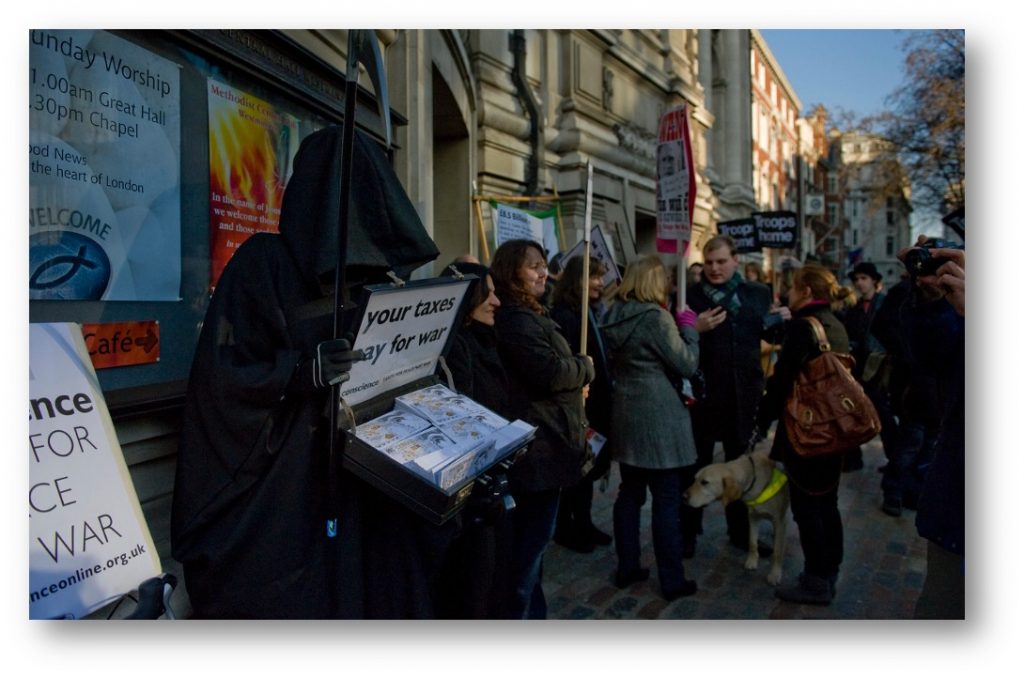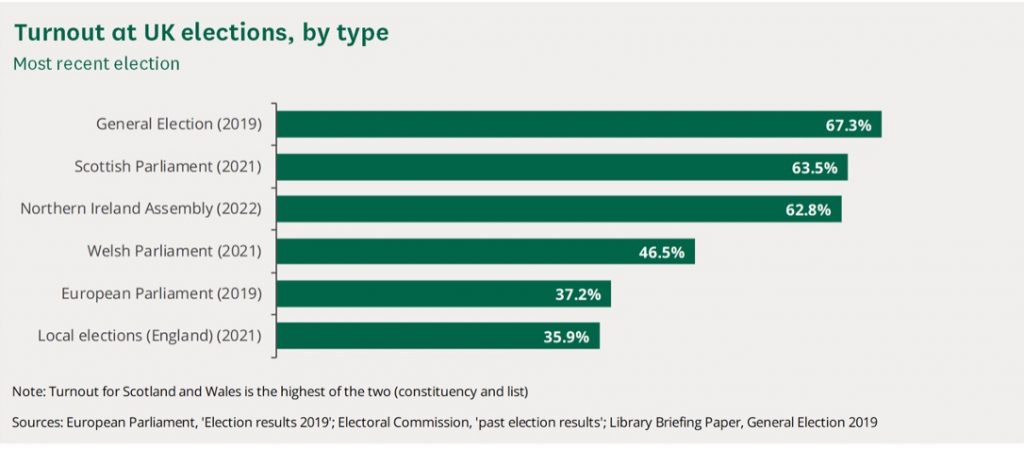Political Participation In The UK And The Democratic Right ToProtest.

-Political Protest, a Powerful Tool for Private Citizens?
Public participation in the UK can be split into two distinct categories,
institutionalised and non-institutionalised participation both contributing fundamental essentials to democratic ideals that form the basis of democratic society.“voter turnout, party membership and other more institutionalised forms of political engagement are caught in a downward spiral, innovative ways of civic engagement seem to be on the rise in most liberal democracies” (Marien S, Hooghe M, Quintelier E (2010)[pp.187] Institutionalised forms of participation in the UK, like voting have fallen short in effective participation , with the last General Election (2019) having a voter turnout of 67.3% with 32.7% of eligible voters not participating and being left unrepresented (Uberoi, E. (2020). When viewing some other UK Elections, we see this trend continuing with Englands local elections in 2021 having a turnout of merely 35.9% with 64.1% of eligible voters not participating. The highest turnout in the UK since 1997 was the Brexit referendum with a voter turnout of 72.2% with 27.8% of the electorate not participating.

This makes non-institutionalised forms of participation important because it opens a different platform for political engagement but also helps spread awareness over political issues, with political protests being one of the physically demonstrative forms of non-institutional participation that historically has highlighted increased political engagement over controversial issues. Political protests allow this engagement and remove any disenfranchisement a private citizen may have with political life and society, while also allowing them to be directly heard by the government and bring awareness to their political issue making them a powerful political tool. Along with this political protest promote freedom of speech and the protection of one’s natural freedoms which is fundamental to democracy.
-The History of Political Protest Within The UK.
When reviewing the history of protest, it becomes apparent how powerful of a tool it is for private citizens in the UK, covering major historical issues like reform for parliamentary representation, suffrage and women’s suffrage. The Battle of Cable Street on the 4th of October 1936, a protest against the British Union of Fascists which was a political formed in Britain in 1932, with estimates up to 310,000 attendees being present at this anti fascist response, is useful to understand how large political protests can be when it comes to non-institutionalised participation. (Megan Dobney). This protest is important because they were actively protesting to protect democratic ideals and to avoid democratic backsliding within the UK political institutions demonstrating why political protests are a powerful tool for private citizens.
In more recent years the UK has undergone protests even larger in scale, demonstrating how protest is becoming a more popular form of participation within the UK. Notably on 15 February 2003, the ‘Stop the War’ protest against the Iraq war that amassed roughly 1.5 million people together to protest the war. (Jeffery, S.(2003). Along with this there has been consistent protests from the 14th of October in relation to the Israel-Hamas war which is a major contentious issue in geo-politIcs. These protests demonstrate how non-institutionalised forms of participation can spread awareness or a message on a large scale and are a powerful tool because they offer a viable alternative to institutional participation.
-The public order act of 2023
This piece of legislation is important to understanding why political protest is an important tool with recent sanctions being put in place to try and hinder certain forms of political protest within the UK.“The wording of the government’s new law is so vague that anything deemed by police to cause ‘more than a minor’ disturbance could have restrictions imposed upon it.” (Boffey, D (2023) This demonstrates how political protest is trying to be circumvented by institutions because of the power it places in the hands of private citizens while being a form of non-institutional participation.
This also demonstrates the attempt by government to try and discredit non-institutional forms of participation and discourage them, ultimately closing off avenues for participation for citizens within the UK, as well as causing disenfranchisement to citizens wanting to participate in protests because of the legal risks that they could undertake while doing so.
-The future of Protest in the UK
Overall, it is clear that the use of Protest’s is one of the most powerful political tools that a citizen has access to. Although there has been attempts by the Westminster government to try and limit the right to protest within the UK, it still remains a dominant political tool within the UK for non-institutional participation by private citizens.
Bibliography
- Boffey, D. and reporter, D.B.C. (2023). High court challenge to ‘constitutionally unprecedented’ UK anti-protest law. The Guardian. [online]
- conscience (2010). 2010 March 5th Chilcot Inquiry Protest EDITED 01. [online] Flickr. Available at: https://www.flickr.com/photos/consciencetaxesforpeacenotwar/4422009449 [Accessed 20 Apr. 2024].
- Jeffery, S. (2003). UK’s ‘biggest peace rally’. [online] the Guardian. Available at: https://www.theguardian.com/uk/2003/feb/15/politics.politicalnews.
- legislation.gov.uk (2023). Public Order Act 2023. [online] Legislation.gov.uk.
- -Marien S, Hooghe M, Quintelier E (2010) Inequalities in Non-Institutionalised Forms of Political Participation: A Multi-Level Analysis of 25 Countries. Political Studies 58 (1): 187–213.
- Megan Dobney, Sertuc Regional Secretary (2017) The Battle of Cable Street They shall not pass: chapter 1 p. 11-12.
- Uberoi, E. (2020). Turnout at elections. commonslibrary.parliament.uk. [online] Available at: https://commonslibrary.parliament.uk/research-briefings/cbp-8060/.
This post excellently outlines the history of protest, highlighting the import of the right to protest through historical examples and the fact that the UK government is attempting to reduce this right through vaguely worded legislation. The post may have benefitted from additionally exploring different forms of protest and their impact, such as sit-ins, marches, boycotts, etc.
this post looks at a number of key ideas surrounding the idea of protest, providing good historical context for what protest has looked like in decades past in the UK. this blog also provides god statistics to understand and highlight the key concept of the post, participation, also using good visuals to make these statistics clear to those reading. to further this blog concepts such as institutionalised and non-institutionalised protests could’ve been defined to provide further undertstanding for those reading.